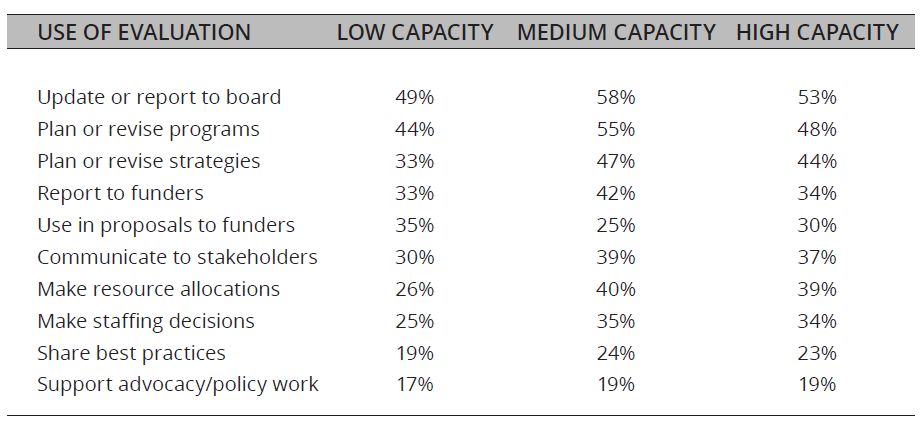 We often hear discussions about an organization’s “capacity” but for some what that means is unclear. How to assess an organization’s capacity and what to do with the results can be even more puzzling.
We often hear discussions about an organization’s “capacity” but for some what that means is unclear. How to assess an organization’s capacity and what to do with the results can be even more puzzling.
Capacity refers to elements necessary to successfully fulfill the organization’s mission. Common areas assessed in determining capacity often include personnel, fundraising, communications, volunteers, clients, technology and facility.
Organizations are generally classified into three sizes based on budget: small, medium and large. A small organization with a <$100,000 budget can operate at high capacity as much as a large organization with revenue over >$5,000,000 can have elements of low capacity. An organization with well balanced capacity is the most likely to succeed.
The following table from the 2016 Northwest Nonprofit Report illustrates that organizations of all sizes may struggle similarly with elements of capacity. (Capacity level in this chart reflects an organization’s self-assessment based on a 10-point scale in evaluating their level of financial capacity to fulfill their mission.) Consider for example when reporting to funders both Low Capacity and High Capacity organizations have indicated they have nearly identical experiences in this area.

It is not uncommon to see organizations struggle with one or more capacity elements. For example, they may have identified professional staff positions necessary to serve their clients but have high turnover or positions that remain unfilled for extended periods of time. This means they may need to improve their human resource capacity in order to effectively serve their clients.
If you would like to learn more about the capacities of nonprofits operating in the Pacific Northwest, I recommend reading the 2016 Northwest Nonprofit Capacity Report. You can compare your nonprofit with other organizations from five different states.
